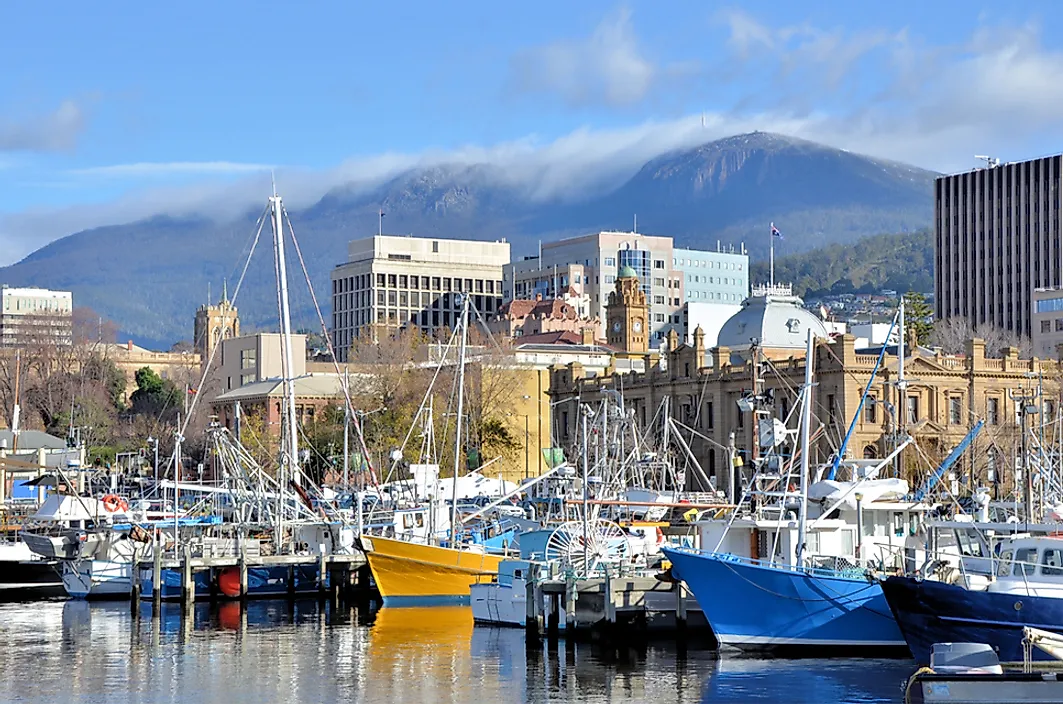What Is the Capital of Tasmania?

Tasmania is an Australian state, situated south of mainland Australia and separated by the Bass Strait. The state includes the main island of Tasmania and the surrounding 334 islands. Tasmania covers a total area of 26,410 square miles, of which 24,911 square miles is land, and is the 26th largest island in the world. Tasmania was established in 1803 by the British Empire as a penal settlement, and was briefly a colony of New South Wales under the name “Van Diemen’s Land.” In 1854, the constitution of Tasmania was passed, which included the change in name. Tasmania became a state in 1901 through the Federation of Australia. Tasmania’s largest and capital city is Hobart.
Hobart
Hobart is the capital and largest city of Tasmania. It is also the most populous city in the state, with a population of about 220,000 people. However, Tasmania is the least populated state in Australia. Hobart was founded in 1804, one year after the founding of Tasmania. Since its foundation, the city has grown, stretching from the mouth of Sullivans Cove to the point where the Derwent River reverts to fresh water at Bridgewater. Despite the increased arrival of immigrants, especially those from Asia during the 20th century, the population in the city remains predominantly Anglo-Celtic. Hobart has a higher proportion of Australian-born residents than all other Australian capital cities.
Geography
Hobart is situated on mainly Jurassic dolerite and extends along both sides of the Derwent River. On the western shores of the river, the city stretches from the Derwent Valley through the areas of Glenorchy and into the hilly areas of New Town. On the eastern shores of the river, the city also extends from Derwent Valley through the Meehan Range, before sprawling into the suburbs of Bellerive. Hobart also has access to several beach areas, including Sandy Bay, Cornelian Bay, and Kingston, among others. The city experiences oceanic climate and average temperatures range from 12.5 °C to 16.5 °C. The city receives 40.8 clear days annually, and has fewer average daily hours of sunshine compared to other cities in Australia.
Economy
Hobart is a seaport city and its economy is highly dependent on shipping. The city is the home port for the Antarctic research activities for both France and Australia, and services over 2,000 tons of Antarctic cargo annually for the Aurora Australis, an Australian research vessel. Hobart also has several other industries with major employers, including Cascade Brewery, Cadbury Chocolate Factory, and Wrest Point Casino. A host of light industries also operates in the city, including the wine industry. Tourism is also a booming industry in Hobart, with visitors coming to the city to explore its inner suburbs and nationally acclaimed eateries. Tourists also flock to the weekly market in Salamanca Place.
Government
The Greater Hobart Metropolitan area is subdivided into five local government areas, three of which have city status. Hobart has an organized local government of the municipalities of Kingborough and Brighton. The local governments service the suburbs within their geographical boundaries, and are also responsible for their respective urban areas to a certain scale, residential planning, and garbage management. However, citywide events, such as summer festivals, are funded by the Tasmanian State Government.











